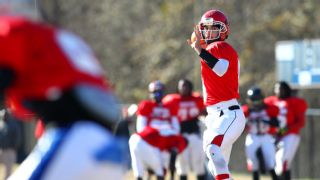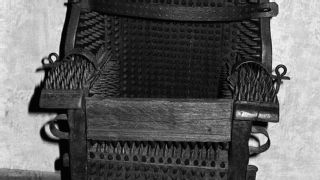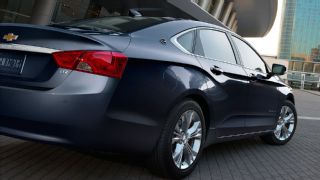America's original all-haiku NFL season predictions! This is the 15th year, the crystal anniversary -- Bristol, I'd like a dilithium crystal, please. Below find a haiku, with predicted record, for each of the NFL's 32 teams. Allowing you casually to say to friends and romantic interests, "Hey, I was reading poetry today."
First, one of those serious topics that comes before fun. There's progress at the intersection of sports and society -- especially, of football and society. In just the past five years, a bleak picture has improved. So -- is victory won?
• Emphasis on reducing deliberate helmet-to-helmet contact at all levels of football -- pro, college, high school and youth.
• Emphasis at all levels on teaching heads-up tackling form, something many coaches didn't even know about not long ago.
• Reduced contact time in practice -- more concussions happen in practice than in games -- in the NFL and NCAA. The defending champion Seahawks were just zinged by the league for not adhering to the less-contact rule.
• The Ed O'Bannon and Power Five decisions, which may lead either to less inequity in the financial situations of big-college athletes or to the collapse of the NCAA. Either would be preferable to the current arrangement.
• USC, Indiana and Maryland just switched to multiyear athletic scholarships -- so the athlete, not the coach, is in the driver's seat regarding staying in school. This example may trigger a cascade of many NCAA programs going multiyear. Indiana began to offer four-year scholarships for the revenue sports of football and men's basketball and promised better health insurance and not to reduce athletic aid for those who lose the ability to play by illness or injury.
• ESPN put its weight and brand behind adding graduation rates to the ranking of college teams.
Most important because of the large numbers involved at the prep level -- never forget most serious football is played in high school, and it's played by people who, legally, are children -- are two huge reforms:
• State laws requiring youth and high school coaches to get training in diagnosing and managing concussions have gone from unknown to almost universal. Rules regarding summer two-a-days heat acclimation have gone from rare to common. In 2011, on the same August day two prep football players died in Georgia of heat stroke. Then, Georgia had no meaningful rules about heat and hydration. Now, Georgia follows the National Athletic Trainers' Association guidelines. Many states do, and soon most or all will.
• States are beginning to restrict high school football contact time. California, the most populous state, just enacted a law that soon will limit full contact in practice to three hours a week during the summer and season and prohibit offseason contact. Texas, ground zero of prep football culture, already limits full contact to 90 minutes a week.
These are movements in the right direction. Your columnist has been pounding the table about athletic reform for years, and many times expressed cynicism regarding whether there would ever be positive change. Now there has been. In just the past five years, football has begun to emphasize risk reduction while high school and college athletics have made strides toward enlightened management.
But we're not there yet: victory is far from won. Further reforms are needed. Among them:
• Rules about heat awareness are one thing; observing the rules is another. Last week Marquese Meadow, a football player at Morgan State University, died of heat stroke. Unlike other risks in life, heat stroke is 100 percent preventable. No one in a supervised setting should die from heat.
• Tax favors to the NFL must end. It continues to be absurd that NFL headquarters in New York City, where Roger Goodell pays himself $44 million a year as he pretends to run a civic-improvement organization, enjoys not-for-profit status. Many of the NFL's stadia receive substantial property tax breaks: This too must end. Nobody likes taxes. But if the super-rich of the NFL don't pay their fair share -- and they don't -- average people must pay more.
• Construction and operating subsidies to the NFL must end. If Google demanded that taxpayers pay for its server farms, there would be outrage. Why isn't there outrage when the billionaires of the NFL demand public subsidies that they convert to private profit?

• Reform of NCAA athletics has barely begun. Failing to graduate football and men's basketball players, not failing to pay them, is the big defect of the NCAA structure -- since a bachelor's degree adds more to lifetime earning than college players would receive in pay-for-play proposals.
• Long-term health care issues for sports injuries from NCAA play have barely been addressed.
• Reconciling the business structure of big collegiate football and men's basketball with the educational core mission of universities has barely begun.
• More restrictions on prep football are needed. Steven Broglio of the University of Illinois estimated in 2009 that high school football causes 43,000 to 67,000 concussions per year. Reduced contact time should cause that number to decline, but it could decline by half and remain far too high. Research increasingly shows that head injuries in youth can lead to long-term cognitive problems. In a society that is increasingly education-based, having millions of high school boys smashing each other's heads cannot be good. The football painkiller scandal is just starting. There's an epidemic of prescription drug abuse -- overdoses on legal drugs have replaced car crashes as the leading cause of accidental death. With 74 percent of those overdoses from painkillers, football, which sets an example for society, simply should get off drugs.
As you settle onto the couch and fire up the flat-screen HD to watch this autumn's performances, you can feel better than you might have felt five years ago -- football is becoming moderately less abusive of young people's bodies. But aspects of the game are still a guilty pleasure. Until such time as all possible risk-reduction steps have been taken, all public subsidies removed from the NFL and big universities get sports into some sense of perspective, a cloud continues to hang over the king of sports.
Now -- America's original all-haiku NFL season predictions.
AFC East
Brady's last hurrah?
Modeling career beckons.
The New England Pats.
Forecast finish: 11-5
A smoking wreckage
of Jeff Ireland era.
Miami Dolphins.
Forecast finish: 6-10
"I am the greatest!"
Ali boast seems mild to Jets.
The Jersey/B Jets.
Forecast finish: 6-10
Foolish Club loses
Ralph Wilson, last of his time.
The Buffalo Bills.
Forecast finish: 5-11

Department Of Redundancy Department: Ferrari's new $1.6 million, 950-horsepower supercar is named LaFerrari. Calling it "the LaFerrari" would become "the The Ferrari." Oprah has an endorsement deal for chai tea. Perhaps the tea should be branded Oprah Winfrey's Oprah Chai Tea Powered by Oprah Winfrey. "Chai" in Eurasian languages simply means tea. So "chai tea" is "tea with tea."
Public Subsidies For Private Profit: New York state taxpayers just invested $90 million in upgrades to Ralph Wilson Stadium, mainly to increase Bills team revenue by making the concession areas more appealing. Reader Jim Medwid of Alden, New York, attended a recent Bills preseason game and reports: "The concourses are now wider, but all drinking fountains have been removed from the stadium, which prohibits bringing in any kind of bottle, even clear-sided water bottles." So taxpayers paid $90 million for renovations that force Bills ticket holders to buy $5 water bottles from the concession stands, and guess who keeps the profit.
NFC East
Warp speed does not help
if the shields (defense) no good.
The Philly Eagles.
Forecast finish: 10-6
Volunteers from the
audience playing OL.
Jersey/A Giants.
Forecast finish: 9-7
Start fast, then brace for
annual December swoon.
The Dallas Cowboys
Forecast finish: 8-8
NEVER says Dan of
name change. CERTAIN say we all.
Washington R*dsk*s.
Forecast finish: 5-11
New York Times Corrections On Fast Forward: During the past six months, the Paper of Record, according to its corrections page:

• Confused Ho Chi Minh City, the former Saigon, with the United States;
• Confused Iran with Iraq (several presidents have made this error);
• Corrected an error regarding the Plastics Hall of Fame;
• Corrected a correction;
• Mixed up the difference between apes and monkeys. What was the subject of the article? Intelligence;
• For at least the fifth time since TMQ started doing Times correction items, referred to Washington University in St. Louis as the University of Washington, which is in Seattle. That whole flyover zone, how's a New Yorker supposed to keep track of what they call stuff down there? Washington University in St. Louis commonly is known as "Wash U" while the University of Washington commonly is "UDub."
• Called a man a "dirtbag" where "dirt rat" was intended;
• "misstated the number of buildings in Detroit that are dilapidated. It is 78,506, not 84,641";
• "referred incorrectly to a visit by Peter the Great to the Netherlands." Did the 18th century call to complain?
• Acknowledged misspelling Jabba the Hutt. Someone called to complain from a galaxy far, far away;
• Confused Bordeaux and Burgundy grapes. Common mistake? The context was a wine review;
• Confused Spider-Man with Iron Man;
• Confused wethers with billy goats, noting the latter "have not been castrated and tend to be obstreperous and malodorous";

• Confused the Sharks and the Jets of "West Side Story." Luckily this mistake did not start a rumble;
• Described a man as born on Mount Sinai -- correct was at Mount Sinai Hospital;
• Ran a much-delayed correction that "is only now being published because it went astray." When corrections go astray, they're out to all hours. Many can never be rehabilitated;
• "Misstated the number of times New Jersey's state credit rating has been downgraded since Chris Christie took office." It's happened six times;
• Confused herringbone with houndstooth;
• Confused Grat, Crat and Clat;
• "Described incorrectly a scene from the movie 'Caddyshack.' In it, a clergyman is struck by lightning when he curses after missing a putt, not when he thanks God";
• Corrected that a British political organization is not an anarchist rock band;
• Admitted it was wrong to say that all elite male athletes have testosterone levels "in the female range";
• Confused Rand Paul with Paul Ryan. Will the entire country get a chance to do this in 2016?
• Became confused about how the Federal Reserve prints funny-money. The White House and Congress don't understand it either!

• Said a museum salon room was 25 square feet, which is the footprint of a walk-in closet; 625 square feet was correct. In Manhattan real estate, 25 square feet sounds big;
• Confused a Greek Orthodox liturgy with a Roman Mass. In the Middle Ages, the editor who made that mistake would have been sent to a torture chamber;
• For the seventh consecutive year since TMQ started doing a New York Times corrections item, confused a million with a billion, and for the seventh consecutive year, made this mistake more than once;
• For the seventh consecutive year, mistook a woman for a man; this time taking months to address the error. Apparently in Manhattan manners, "are you a man or woman?" has become a loaded question;
• For the second consecutive year, confused descendants and ancestors;
• "misstated the number of turtles that died" after being seized by customs officials in Germany;
• And mistook Hameedullah Farooqi for Fraidoon Barekzai.
AFC North
Took Lombardi, then
missed playoffs. Win some, lose some.
Bal'amer Ravens.
Forecast finish: 10-6
Oh-for-the-playoffs:
Marvin Lewis can't shake curse.
The Cincy Bengals.
Forecast finish: 8-8
Graying defense, no
run game. Still -- watch out for them.
The Pittsburgh Steelers.
Forecast finish: 8-8
Johnny, LBJ,
GOP: Cleveland does rock.
The Browns (2.0).
Forecast finish: 7-9
Another NFL Abuse Of Taxpayers Continues: The FCC has begun its review of the proposed AT&T-DirecTV merger. Your columnist thinks this creates an opportunity for either the FCC or the Justice Department to end the arrangement in which only subscribers of DirecTV can purchase NFL Sunday Ticket.

In Canada and Mexico, anyone can order Sunday Ticket via cable: these countries have laws that forbid transmission monopolies. But in the United States, only DirecTV offers Sunday Ticket. DirecTV is a great service if you can get it, but millions cannot -- clear line of sight to the sky above Texas is required. Trees? Live in an urban apartment building? Fuhgedabout DirecTV. The arrangement for Sunday Ticket means many millions of the same taxpayers who fund NFL stadia are forbidden to decide what NFL game they want to watch -- they can watch only whatever woofer contest is force-fed them by the local network affiliate.
Defenders of this arrangement have repeatedly said Sunday Ticket would be made available via broadband subscription to people who can't get DirecTV. Don't believe it. The fine print: "You might be eligible for NFLSUNDAYTICKET.TV if you live in a select apartment building, attend one of the 10 select universities, or live in select areas in one of the following metro cities: New York City, Philadelphia or San Francisco." Parts of three cities, 10 universities and "select" apartment buildings are released from the cartel. Everybody else gets taxed to support the NFL but is forbidden freedom of choice regarding what to watch.

More NCAA Institutional Corruption: Michael Brewer, who didn't play much at Texas Tech, graduated in May 2014 with two years of NCAA eligibility remaining. Because he holds his bachelor's, he doesn't need to sit a year before playing at another college as a graduate student. Smart, ambitious athletes employ the five years an NCAA scholarship can run to obtain their bachelor's in three or three and half years, then get many of the credits for a master's. A Texas native, Brewer wanted to enroll at either TCU or Texas, so friends and family could attend his games. But Texas Tech rejected Brewer's appeal to play collegiate sports anywhere in the Big 12 Conference.
Brewer is now at Virginia Tech, a great place for any athlete who's also a bona fide student, so all worked out fine for him. But his situation reveals two things. The minor revelation is that Texas Tech coach Kliff Kingsbury and Tech athletic director Kirby Hocutt are vindictive -- going out of their way to harm a former student whom, in a university environment, they were supposed to help. The major revelation is that the NCAA is, in fact, a cartel. All colleges impose restrictions on current students -- but NCAA rules allow colleges to impose restrictions on students who have graduated and departed the campus forever. This is yet more evidence that NCAA institutional corruption runs so deep, the only fix is to tear the whole system up and start over.
NFC North
Bears: high-scoring team
with no defense. Yes, the Bears.
The Chicago Bears.
Forecast finish: 10-6
Pack, Favre reach peace deal.
Brett: Give pointers to Putin.
The Green Bay Packers.
Forecast finish: 9-7
AAU football:
Superstars but poor results.
The Detroit Lions.
Forecast finish: 6-10
Breathe sigh of relief:
Broncs now more S. Bowl losses.
Minnesota Vikes.
Forecast finish: 4-12

Bad Isn't Good Enough; The 76ers Hope To Be Horrible: Two weeks ago, TMQ declared the Philadelphia 76ers have become "Zen masters" of the NBA art of getting rid of players in order to lose deliberately. I noted that in the past 12 months they'd traded away their three best performers, mostly for benchwarmers with expiring contracts, then used not one, not two, not three, but four choices in the June 2014 draft on gents who are either injured or have existing contracts with European teams. Drafting them ensured more losing!
Apparently Sixers management remained nervous about the chance of an accidental victory, so proceeded a few days ago to trade away the team's leading scorer, Thad Young, for a draft choice and more backups. The Sixers are such Zen masters they don't even pretend to try to win!
Unified Field Theory of Creep: As noted by many readers, first Joe Maiz of Palmyra, New Jersey, Disney just released its 2014 holiday ornaments. Tom Delio of Virginia Beach, Virginia, reports, "On August 15, I saw pumpkin spice lattes advertised at the Joe Muggs coffee shop at the Virginia Beach Books-a-Million. Also, this past Friday the At Home store in Chesapeake, Virginia, in addition to having Halloween decorations on sale, had Thanksgiving and Christmas decorations on sale as well."

News About News: While print editions of newspapers struggle, their web editions keep getting better. Check out the Washington Post's Wonkblog, which has evolved into an outstanding briefing on developments in public policy and public opinion. The daily emailed update offers links to opinion pieces and to the academic studies that back them. The Post's Storyline is a terrific new feature, addressing public-policy questions through the eyes of individuals.
A recent Storyline article examines what happens to underground miners when their industry contracts. Printed newspapers and coal mines have unsettling similarities. The MSM put front-page emphasis on job losses in the heavy industrial sector because mining and automaking feel like print journalism -- productivity improvements and new technology cut jobs for those inside the sector, while everyone else benefits from lower prices and plenty of supply. With Jeff Bezos now owning the Post and pumping in capital, perhaps printed newspapers will revive -- the way American steel production has been bouncing back nicely. (See Table 10.)
AFC South
Hardly seems as though
Peyton departed, does it?
Indy Lucky Charms.
Forecast finish: 10-6
Fisher shown the door
after 16: downhill since.
Tennessee Titans.
Forecast finish: 7-9
Kirk, Spock both yelled KHANNNNNNNNNNNNNN!
How long 'til Jax fans yell same?
Jacksonville Jaguars.
Forecast finish: 6-10
Texans last season,
Three Mile Island: two meltdowns.
The Houston Texans.
Forecast finish: 6-10
How the Rich Outsmart Themselves: Recently the Wall Street Journal reported that major money institutions, such as the General Motors pension fund and the Harvard University endowment, missed out on the banner stock rally of the past five years -- a 76 percent surge in the S&P 500 -- because they shifted capital from blue chips into hedge funds. General Motors and Harvard would have been better off simply calling the 800 number of Fidelity or T. Rowe Price or any similar "retail" broker that's open to the public, and putting their billions into the most basic S&P index fund. But retail brokerages are for the little guy! Money-management insiders like to rub shoulders with secretive hedge funds run by Gordon Gekko types. That makes the money-management insiders sound more important.

Making super-secretive deals -- even if they turn out to be super-secretive bad deals -- is used by money managers to justify their outsized pay. Last week some Harvard alums released numbers the university's money managers have been trying to keep quiet. (The alums are unhappy with the university's self-indulgent use of money. Harvard's endowment is sufficient that every undergraduate could attend free, but instead university insiders live in luxury while alums are dunned for more donations, a topic this column will return to later this autumn with my annual endowment-abuse item.) The alums found that Harvard's endowment has a 324-person staff with an average annual income of $410,000, captained by the recently departed Jane Mendillo, who paid herself $5 million a year. For doing a terrible job! Harvard would have ended up ahead by laying off 323 of its money managers and instructing the remaining one to call the 800 number of Vanguard. But then there would have been no mysticism about secret investment formulas and no excuse to divert huge paydays to unproductive white-collar cronies of Harvard's administration.
General Motors and Harvard are hardly the only ones to take a bath by believing hedge-fund propaganda. The Wall Street Journal reports the California public-employee retirement fund Calpers -- holding about $295 billion, it numbers among the world's major money pots -- blundered by investing in hedge funds: "Average public-pension gains from hedge funds were 3.6 percent for the three years that ended March 31, as compared to a 10.6 percent return from stocks." Calpers would have been better off filling out a form on the Web and putting assets into a basic stock index account.
New York City's pension reserve, which holds only 40 percent of the amount needed to fund promised benefits, has nose-dived since its managers began investing in private equity, an asset class similar to hedge funds. David Chen and Mary Walsh of the New York Times report that some private-equity funds invested in by the city's pension account have lost about half their value during the same period plain-vanilla investments were soaring.
Hedge funds are consistently effective at one thing -- enriching their own top management. Bernard Madoff ran a hedge fund. In 2012, SAC Capital Advisors and Bridgewater Associates, both prominent hedge funds, failed to beat the S&P 500, yet the CEOs of these firms each paid themselves more than a billion dollars for their poor performance. This would seem insane if you were naïve enough to think the purpose of a hedge fund is to create return for investors. If the purpose of a hedge fund is enriching its own top management, the situation becomes comprehensible.
Many investors steer clear of hedge funds for this reason. But the allure of the secret deal understood only by whispering insiders is difficult to resist. Managers of big pots of money need to pretend they are engaged in super-complex alternative-asset transactions, rather than just investing in the same blue-chip stocks that everyone knows about. The pay and overstaffing at endowments and pension administrations are rationalized on the grounds that only highly paid people could possibly grasp the world of hedge funds. Thus hedge fund CEOs and managers of large institutional money pots have a codependent relationship, each ensuring the other's paydays -- using cash diverted from investors and stakeholders.
NFC South
Gave Seahawks better
playoff game than Broncos did.
New Orleans Saints.
Forecast finish: 12-4
League's only team with
a Director of Mascots.
Carolina Cats.
Forecast finish: 12-4
Bad-sport Schiano
replaced by nice guy Lovie.
Tampa Buccaneers.
Forecast finish: 6-10
NFC title
game seems very long ago.
Atlanta Falcons.
Forecast finish: 6-10
AFC West
Scoreboard was spinning
'til met the Bluish Men Group.
The Denver Broncos.
Forecast finish: 11-5
Made it to nine-oh;
do not talk about the rest.
Kansas City Chiefs.
Forecast finish: 10-6
Dude, let's hit the beach.
Whoa, we have a game today?
San Diego Bolts.
Forecast finish: 9-7
Soon may have no home.
Then San Antonio bound?
The Oakland Raiders.
Forecast finish: 3-13
Exhaust On The Car Pages: This column has noted that newspapers long have had a touchy relationship with auto reviewing. Auto dealers are major advertisers, so reviewers tend to praise all marques. Reviewers tend to extol maximum horsepower, regardless of cost, environmental impact or the relationship between horsepower and road rage -- after all, they don't fuel or insure the cars they test-drive. The terrific 2002 book "High and Mighty" by Keith Bradsher detailed the ways in which automakers all but bribe newspaper reviewers.

Lately the news on this score has been good. Car reviewers at the Washington Post and Wall Street Journal are doing solid jobs of writing about auto safety, mileage and environmental impact. Recently the Post's Warren Brown called the new Infiniti QX80 too big with "miserable" mileage (16 mpg), while saying the Buick Regal GS is a nice car but he "doesn't care" about the zero-to-60 time General Motors is touting. Dan Neil of the Journal recently acknowledged that extolling extreme horsepower is "obnoxious and juvenile."
Then there's the New York Times. Though the paper's editorial pages call for greenhouse-gas restrictions, Times auto reviewers laud huge, wasteful engines while skipping environmental impact. Here the Times practically has an orgasm about the Mercedes S550. Not only can the car's 155 mph top speed not be used on any public road, including in Germany -- autobahns have speed limits of about 80 mph in some areas, while anyone can be ticketed for driving too fast for conditions -- this car can barely get out of second gear in New York City, where the default speed limit is 25 mph and the max speed limit is 40 mph on FDR Drive. The Times gushed over the superpowered Mercedes in language that might have embarrassed a publicist -- "gorgeous woods and leather that feels almost like velvet that elevate the S-Class beyond the competition" -- without mentioning it gets a miserable 17 mpg and emits 7.3 tons of carbon dioxide annually. Saving fuel is for the little people!
This isn't an isolated instance. Times mpg insincerity includes lauding of the 580-horsepower Camaro ZL1. The reviewer approved of the extreme acceleration generated by the engine, which has just shy of twice as much horsepower as the 1966 Corvette Stingray, and praised how the suspension felt on a racetrack at 150 mph. No buyer will ever drive a Camaro at 150 mph: the power will be used for running red lights, speeding and cutting others off. The Times did not mention the car's pathetic 14 mpg combined fuel use until the 26th paragraph, and never mentioned the 11 tons of carbon dioxide emitted annually. At 645 grams of greenhouse gases per mile, the Camaro is one of the dirtiest automobiles on sale today. By comparison the Ford Focus emits 287 grams per mile. Let the little people worry about climate change!
The Times praised the 550-horsepower Jaguar XFR-5 and its "spectacular" 186 mph top speed, while scoffing at the "dreary" acceleration of the 29 mpg Chevy Impala. To avoid dreary acceleration, the Times counseled, order the 305 horsepower option -- "you want the big motor." That's easy to say if a corporate expense account pays for gasoline. The new Impala is impressive, and the fact that a Detroit automaker builds a well-done full-sized sedan that gets a combined fuel rating of 29 mpg is something the New York Times ought to celebrate. Instead the Times calls the car underpowered -- a rich man's complaint.
While praising high-polluting road-rage toys, the Times turns up its nose at nearly all economy cars -- they're for the little people! Ezra Dyer, same reviewer who was not amused by the fuel-efficient Impala, didn't like the Chevrolet Malibu Eco, which also records 29 mpg and emits half as much carbon dioxide per mile as the monsters the Times adores. Though Dyer found the fuel-efficient Malibu Eco beneath him, he did add, "I suspect that I'll enjoy the 259-horsepower turbo model."
Of course the New York Times has wealthy readers who want news about products for the 1 percent: the paper touts expensive fashion and high-end restaurants, too. But a designer cocktail dress or $300 meal don't have public-policy implications. Of all consumer choices, selecting a car has the most impact on policy issues of environment, energy security and urban congestion. If you were a United States soldier, sailor or aircrew member on duty protecting oil supply lines in the Persian Gulf, how might you feel about the nation's most important newspaper mocking fuel efficiency while praising wasteful cars? If all U.S. automobiles averaged 29 mpg, Persian Gulf oil imports could be eliminated, and the risk of climate change would be reduced, according to figures from the U.S. Energy Information Administration.
New Cognomen: Reader Damon Spear of Seattle argues, "If you're going to use Jersey/A, Jersey/B and City of Tampa, you should call Colin Kaepernick's team the Santa Clara 49ers." Mr. Data, make it so!
NFC West
Second-best for two
straight years. This year may be best?
Santa Clara team.
Forecast finish: 12-4
West Coast offense steps
back, West Coast defense steps up.
Seattle Seahawks.
Forecast finish: 11-5
Won 10, went home: League
needs seeded playoff format.
The AZ Cardinals.
Forecast finish: 9-7
Chose Bradford over
Griffin: Regrets begin now.
The St. Louis Rams.
Forecast finish: 4-12
Update: The David Sills Story: Four and a half years ago the media world went atwitter with the amazing story of a 13-year-old who already had a college football scholarship! Here is the ESPN report from 2010. The story was picked up by many news organizations, leading to the boy appearing with his father on ABC's "Good Morning America." Thirteen-year-old has college football scholarship -- amazing!

Except, as TMQ noted at the time, the story wasn't true. He had a "verbal commit," which is completely meaningless. NCAA recruiting rule: "The verbal 'commitment' is not binding on either the college-bound student-athlete or the institution. Only the signing of the National Letter of Intent accompanied by a financial aid agreement is binding." Signing a national letter of intent couldn't happen, in this boy's case, until February 2015. Mention that and the "amazing" story goes poof. So media accounts didn't mention that. Steve Clarkson, the hustler behind the phony story, sure didn't bring it up. More details of how this happened are in my 2013 book "The King of Sports."
The young quarterback, David Sills V, just started his senior year. You will not be surprised to learn the USC "commitment" evaporated. All parties to the 2010 charade -- Clarkson; former USC coach Lane Kiffin; Sills' father, a wealthy man who essentially founded a school to promote his son -- got what they wanted, which was national publicity. Now Sills V is verbally "committed" to West Virginia. That could change too -- "commitment" in this sense means "what I'm in the mood to say today." Until a letter of intent is signed, nothing is certain. I've seen Sills V play, and he's impressive. But he's not in the ESPN 300, suggesting the 13-year-old-phenom stuff was just hype. Of course recruiting rankings often are wrong -- maybe the ESPN 300 is wrong regarding Sills V. Or maybe the young man has been too publicized for his own good.
Now about that school his father founded, Eastern Christian Academy in Elkton, Maryland. "School" might be a better term -- young men go there to practice sports, learn religion and take online courses. As a churchgoer, the religion part seems fine to me. (It's a private institution.) But is sitting in front of a computer clicking boxes on a screen really education? Here is the "faculty" of the "school." Maybe Eastern Christian reaches kids who would have washed out at a traditional high school: If so, then the institution is doing a godly service. But the whole enterprise sounds fishy, to keep the seagoing analogy.
Eastern Christian sounds especially fishy since so much of its effort is dedicated to football promotion. The "school" doesn't spend much on teachers, yet its barnstorming football schedule includes three jet-travel games in Texas, plus two away dates in South Carolina, one in Ohio, one in New Jersey. Eastern Christian plays just three contests versus local opponents. The schedule reflects one of the disturbing trends of high school football -- treating prep teams as a miniature NFL, which pleases promoters and strokes the egos of adults and fathers, but is antithetical to education.

Sports Economics Watch: Two weeks ago TMQ noted that Tony Romo and Andy Dalton, a combined 1-6 in the postseason, have richer contracts than Tom Brady, whose 18 playoff victories are the most ever. Brady said he agreed to less than maximum value to ensure the Flying Elvii have the cap space to retain other starters. (This view is not entirely selfless; being at juggernaut New England is good for Brady's endorsement income.) Last week the Patriots asked perennial Pro Bowl guard Logan Mankins to take a pay cut. When he declined, he was summarily traded to City of Tampa. There but by the grace of the football gods goes Brady!
The Patriots' signal-caller can't be happy he agreed to work for less than market value, only to find the team offloading a guy who stands between him and some Ticonderoga-class nose tackle. Brady's future male-modeling potential will decline if the new left guard allows the handsome quarterback's face to get messed up. Candidates for the spot include a bevy of undrafted free agents -- Ryan Wendell, Dan Connolly, Jordan Devey and Josh Kline -- all of whom earn substantially less than Mankins. At least Connolly has a prime parking place.
Next Week: During the preseason, Tuesday Morning Quarterback uses "vanilla" items designed to confuse scouts from other sports columns. Starting next week as the football artificial universe resumes, TMQ will come at readers from all directions with obscure references, recondite analogies and unorthodox fact packages. I'll employ an up-tempo format in which each new item begins before the previous one ends.


